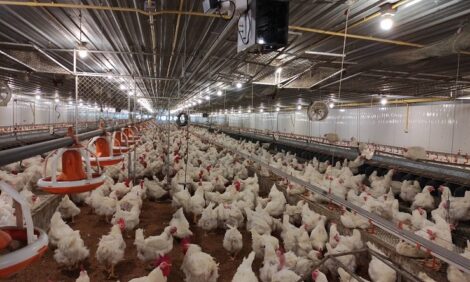



National Chicken Council says E15 waiver will harm chicken producers
The US Environmental Protection Agency (EPA) in March proposed regulatory changes to allow gasoline blended with up to 15 percent ethanol (E15) to take advantage of the 1-psi Reid Vapor Pressure (RVP) waiver for the summer months that has historically been applied only to E10.
“As corn users, our industry faces potential impact by changes in biofuels policy such as modifying the volatility requirements for E15 fuel blends during the summer season,” said NCC President Mike Brown in new comments filed today.
In previous comments submitted regarding the proposed 2019 required volume obligations (Docket ID No. EPA–HQ–OAR–2018–0167), the National Chicken Council (NCC) expressed concern that such an action, as anticipated at the time, holds the significant potential for adverse impacts on the chicken industry.
“NCC believes that EPA’s E15 waiver proposal has neglected to consider the impact on the broiler industry, and for poultry and livestock feeders generally,” Brown continued in today’s comments. “Providing a waiver to year-round E15 use will result in a rapid expansion of corn use under the RFS similar to the early years of the programme adding the potential for price and supply volatility in the corn market.”
Section 211(o)(7)(A) of the Clean Air Act provides that EPA, in consultation with the Secretary of Agriculture and the Secretary of Energy, may waive the applicable volumes specified in the Act in whole or in part based on a petition by one or more States, by any person subject to the requirements of the Act, or by the EPA Administrator on his own motion. This provision of the statute is known as the “off-ramp.” On two major occasions, in 2008 and in 2012, such waiver petitions were denied by EPA under the agency’s interpretation of the statute.
NCC noted in its comments that a new interpretation of the restrictions on E15 use and its impact on the corn market necessitates a new standard to trigger the RFS volume waiver. As such, NCC suggests that a predictable, transparent off-ramp fair to all involved be based on the USDA stocks-to-use-ratio in the June WASDE report. Partial waivers for the remainder of the compliance year (ie, approximately six months) would be structured as the table below presents:
|
Stocks to Use |
RFS Waiver Amount |
|
More than 10% |
No Waiver |
|
7.5% to 10% |
10% |
|
6% to 7.49% |
15% |
|
5% to 5.99% |
25% |
|
Less than 5% |
50% |
“NCC strongly supports efforts to create a more reasonable and sustainable approach to the nation’s biofuel policy and as such urges EPA to provide a more workable and transparent off-ramp process for times of economic stress on chicken producers and other poultry and livestock feeders,” Brown concluded.
The comments in their entirety can be found here.









